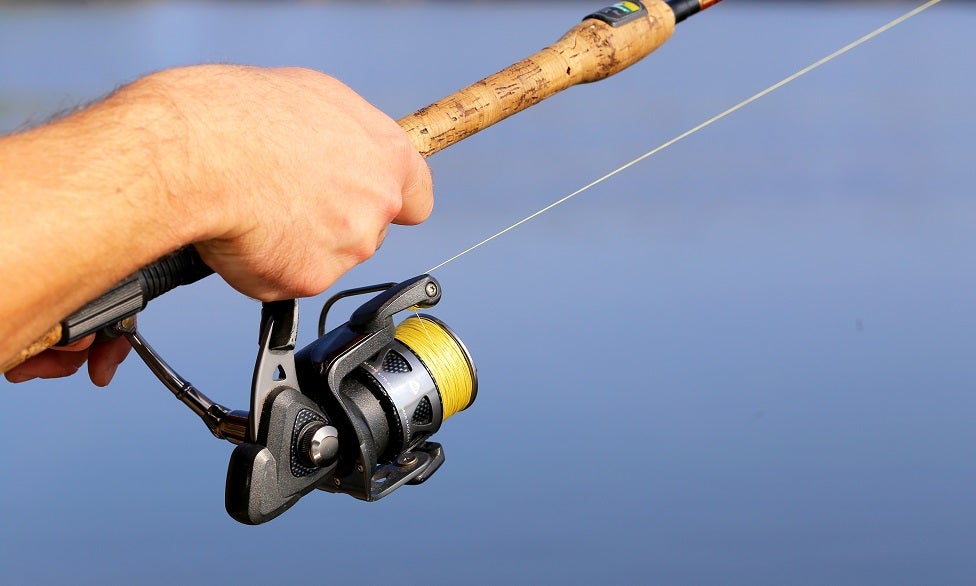
Our Editors independently research, test, and rate what we feel are the best products. We use affiliate links and may receive a small commission on purchases.
Trying to decide exactly which saltwater spinning reel is the right one for you can be a challenging task. There are so many brands, so much to know, and the options seem endless. I know how hard it can be to sort through the noise and find the ones that really work and that fit your needs. My goal today is to help you sort out what’s important from what’s not. I’m going to walk you through everything you need to know in order to pick out the best saltwater spinning reel to match your spinning rod, that will fit your fishing kit. Not only will I help you learn what to look for, we are also going to take a look at some of top saltwater spinning reels on the market.
Best Saltwater Spinning Reels
For more of my fishing gear recommendations, have a look through these popular Outside Pursuits guide links: Spinning Rods, Tackle Boxes, Fishing Kayaks.
Quick Answer: The 7 Best Rated Spinning Reels For Saltwater
- Penn Battle II Spinning Fishing Reel
- KastKing Megatron Saltwater Spinning Reel
- RUNCL Spinning Reel TITAN I
- Piscifun Spinning Reel Lightweight
- Penn Pursuit II Spinning Fishing Reel
- KastKing Sharky III Fishing Reel
- SeaKnight Rapid Saltwater Spinning Reel
Our reviews of the top rated saltwater spinning reels with our comparison table and buyers guide below will help you choose the right reel for you. Let’s get started!
Saltwater Spinning Reel Reviews
#1 Penn Battle II Spinning Fishing Reel
- 5 Stainless steel bearings
- Carbon fiber drag system
- 8 Reel sizes available
- 6:2:1, 5:6:1, 5:3:1 gear ratios available
The Penn Battle earned the top slot as the best spinning reel for saltwater due to the quality, looks, and name of the Penn brand.
Anglers absolutely rave about this reel and it is specifically designed to tackle big saltwater fish and landing them without a problem.
I’m a fan of the sealed ball bearings myself. Even though they’re stainless steel, saltwater is harsh on parts.
That plus the metal aluminum body is ideal for tackling the harshness of the seas wherever you may be. Aluminum, of course, does not rust so it’s a perfect lightweight body choice.
One of the features of this reel that would be easy to overlook is the spool capacity markers. There are lines on the spool that indicate when the spool is 66% full and 33% full so you won’t be taken by surprise! Not a bad idea, really.
If you’re looking for larger or smaller reels, you can find them here. Everything this reel has to offer is available in 6 different sizes with capacities from 240 yards of line up to 475 yards of line.
Best For: Anglers who want the perfect size and capacity for their needs in a single great reel design.
#2 KastKing Megatron Saltwater Spinning Reel
- Saltwater approved by KastKing
- 7+1 stainless steel ball bearings
- 4 Reel sizes available
- 30 lbs of drag capacity
If you’re looking for a great brand name with a reel that’s approved to stand up to saltwater abuse, look no further!
KastKing knows how to make great equipment and this spinning reel is ready to tackle big gamefish in any conditions.
This reel is large and in charge, no questions. It’s available in 4 sizes, all of which are ready to land huge fish. Why?
Because of the 30 pound drag system it’s capable of fighting some massive fish without letting them run.
Of course, reeling against a big gamefish isn’t easy for anyone. That’s why the 7+1 bearing system gets my stamp of approval. The smoother the reel, the better the fight will go for you.
Thus, the extra bearings are a welcomed addition to smooth out any fight.
With a stainless steel shaft, brass gears, and aluminum body there’s nothing in this reel that can be damaged by the corrosion of salt water. It’s going to be ready to go for years to come!
Best For: Anglers looking for the best saltwater spinning reel under $100 with robust internals and corrosion resistance.
#3 RUNCL Spinning Reel TITAN I
Another saltwater reel that’s ready to take on the fish in one of 5 different sizes. Each size has a different capacity and ideal situation, so consider carefully which is best for you before you make the order! I had to make a spot on our list for a reel that has a more affordable tilt. This reel comes in at a price that’s just hard to ignore. Of course, cheap isn’t the best in all situations. Fortunately, it also has most of what we look for in a great saltwater reel. The machined aluminum spool is pretty standard but ideal due to the corrosion resistance inherent in aluminum. This reel houses the drag knob at the front of the reel like most spinning reels and doesn’t seek to revolutionize anything about the design. However, there is a swappable handle which can accommodate left hands or right hands. This is actually a pretty good feature on a reel at this price range. Overall this reel is the best saltwater spinning reel for the money that can get you fishing without breaking the bank or as a gift to a new saltwater fisher.
#4 Piscifun Carbon X Spinning Reels
- Carbon fiber drag washers
- Double main shaft bearing 10+1
- CNC Machined aluminum braid ready spool
- Graphite body
Okay, so let’s take it up a step from budget reel to value reel. If you’re looking for a reel that has everything you need, nothing you don’t, and sits at a price that just makes everything more attractive, then this one is for you!
If you’re not aware, carbon fiber is another corrosion resistant material. It also happens to be insanely lightweight and makes for an amazing reel body.
In fact I like it even more than aluminum, mostly thanks to the slightly lighter weight.
The double main shaft bearing rocks a total of 10 bearings plus a roller bearing. This is more and more common on reels these days, but the high bearing count is never a bad thing.
Plus, the sealed stainless steel bearings are perfect for saltwater.
I will admit, I’m a bit of a sucker for the advanced modern design and aesthetic. The colors are awesome and I would not hesitate to add this to my gear!
Best For: Anglers looking for the best saltwater spinning reel under $50 with some really top end features!
#5 Penn Pursuit III 8000C Spinning Fishing Reel
- Graphite body and rotor
- Oiled felt drag system
- Instant Anti-Reverse
- 4 ball bearings
Penn makes it back on to our list yet again. This time the reel is similar to the Battle II that we reviewed earlier, but with a few changes that make it a bit more affordable.
That doesn’t mean it’s a poorer reel, though!
Let’s figure out why this reel is more affordable than the Pursuit II reel we looked at before. First off, the oiled felt drag system is a little lower performance.
These drag systems have been popular for years and once were the standard. They’re still great drag systems and they work just fine but lack a bit of the high end performance of carbon.
While the 4+1 bearing system is on the low end, many quality reels use this setup. When executed correctly, like the Pursuit II, they’re just as smooth as any other.
Of course, this reel has some of the same features as the Battle II. One of them that I love is the spool capacity markers. These markers let you know how low the spool is so that you don’t have a fish run with the entire spool.
Best For: A solid platform with reliability that’s dialed in for a budget angler.
#6 KastKing Sharky III Fishing Reel
- Updated for 2018
- 10+1 bearing system
- 5 Reel sizes available
- Triple disc carbon drag
KastKing is one of my favorite brands for the money, quite honestly. They always seem to do it right. This reel is no different.
I have to mention that, like many of the high end reels on our list, this one is available in 4 sizes. Each size is larger and can handle more line.
Remember, if you’re using braided line read the specs because it will be different in capacity than mono line.
Like a true workhorse, this reel can crank out up to 40 pounds of drag on fish. Most of the time I think you’ll find that’s more than overkill.
However, if you’re aiming at big gamefish especially for saltwater fishing then you’ll be glad you have the power.
As it should, the reel is made mostly from aluminum and stainless steel to keep everything in top shape when exposed to that corrosive saltwater.
Best For: Anglers looking for the best saltwater spinning reel that’s loaded with top features!
#7 SeaKnight Rapid Saltwater Spinning Reel
- Available in multiple sizes and heights
- 10+1 bearing system
- 33 Pound drag
- Aluminum construction
Of all the reels on our list today this one has, by far, the most options. There are 4 total models of this reel but they each have some unique features and customizability to suit your needs.
Overall this reel is ultimately a beginner friendly reel at a great price. However, because of the great options, I’d say it makes a solid contestant for any angler.
Under the hood are a wide variety of options from spool sizes to reel length.
The larger reels in this series use the lower 4.7 gear ratio which is ideal for hauling in some big fish. The smaller reels are quicker at the 6.2 ratio for fast moving bait and quick retrieval.
I have to say, I’m not a fan of the large round handle knob, but it’s a minor setback on an otherwise good saltwater reel.
Best For: Beginners looking to really tailor their reel to the type of fishing at hand.
Saltwater Spinning Reel Comparison Table
| Saltwater Spinning Reel | Bearings | Weight | Gear Ratio(s) | Rating | |
|---|---|---|---|---|---|
| Penn Battle II Spinning Fishing Reel | 5 + 1 stainless steel bearings | 8.1 oz | 6:2:1 5:6:1 5:3:1 | 4.6 / 5.0 | |
| KastKing Megatron Saltwater Spinning Reel | 7 + 1 shielded stainless steel bearings | 10.1 oz | 5.2:1 | 4.4 / 5.0 | |
| RUNCL Spinning Reel TITAN I | 9 + 1 shielded stainless steel bearings | 12.8 oz | 5.3:1 | 4.8 / 5.0 | |
| Piscifun Spinning Reel Lightweight | 10+1 stainless steel bearings | 8.8 oz | 5.1:1 | 4.5 / 5.0 | |
| Penn Pursuit III Spinning Fishing Reel | 4+1 shielded stainless steel bearings | 11.9 oz | 5.2:1 | 4.6 / 5.0 | |
| KastKing Sharky III Fishing Reel | 10+1 stainless steel bearings | 8 oz | 5.2:1 | 4.7 / 5.0 | |
| SeaKnight Rapid Saltwater Spinning Reel | 10+1 stainless steel bearings | 9.3 oz | 6.2:1 | 4.7 / 5.0 |
How to Choose the Best Saltwater Spinning Reel – Buyers Guide
- Bearings
- Gear Ratios
- Body and Housing
- Drag Systems
- Choosing Saltwater Specific
- Triggerspin Reels
- FAQs About Saltwater Spinning Reels
- Conclusion
Now since every angler has different needs and preferences, we’ll now take a look at the most important considerations for choosing your next saltwater spinning reel.
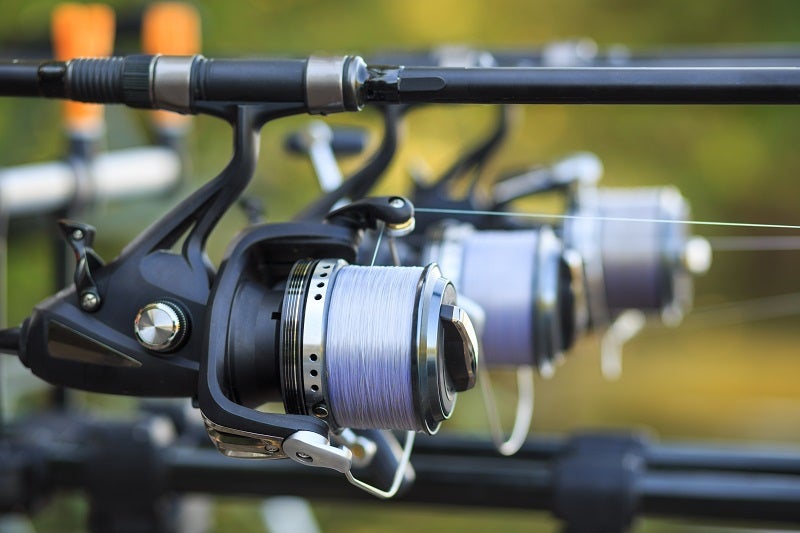
Spinning Reel Design Considerations
Ball Bearings
Bearings are the steel or ceramic balls that help reduce friction around moving parts. Inside your spinning reel you’ll have a set of bearings that help aid in the motion of the reel itself as you turn the handle.
Without them your reel would perform very poorly!
So, what type of bearing is best? In the case of saltwater use we need to be very careful of corrosion. Saltwater is notorious for causing rapid corrosion of metals.
Therefore ceramic bearings are ideal. They’re immune to rust because they’re not metal. Plus, because of how absurdly hard ceramic is, they are extremely effective in reducing friction. They’re one of the most expensive bearing options, however and can be hard to find.
Stainless steel is by far the most common option. These bearings are nearly rust proof and feature 99% of the tangible performance of ceramic. Because stainless steel is made specifically not to rust, it’s very likely to last a lifetime of use in saltwater environments.
Of course there is a difference in performance, but it just depends on how much you’re willing to pay for the increase in performance. What’s it worth to you?
When choosing a reel, look for a higher number of bearings. Some reels go as low as 4 bearings, other reels may go up to 9+ bearings. Generally, as a rule, the more bearings there are the smoother your retrieval will be.
Gear Ratios
Gear ratios are an incredibly important but overlooked aspect of choosing the right reel for the job.
Reels with higher gear ratios retrieve line faster and are ideal for quick moving bait. Reels with lower gear ratios retrieve more slowly but offer greater leverage when fighting large fish.
When you see gear ratios written out they will be like this (7.2 : 1). To read them properly think of the first number as the revolutions of the spool.
The second number (usually 1) is the number of turns of the handle. In this instance, every 1 handle turn will produce 7.2 spool turns.
Obviously, the higher the first number the faster the reel. As I mentioned above, fast reels aren’t always the best choices. Slower bait or more leverage may be ideal in many situations where you would want a lower gear ratio.
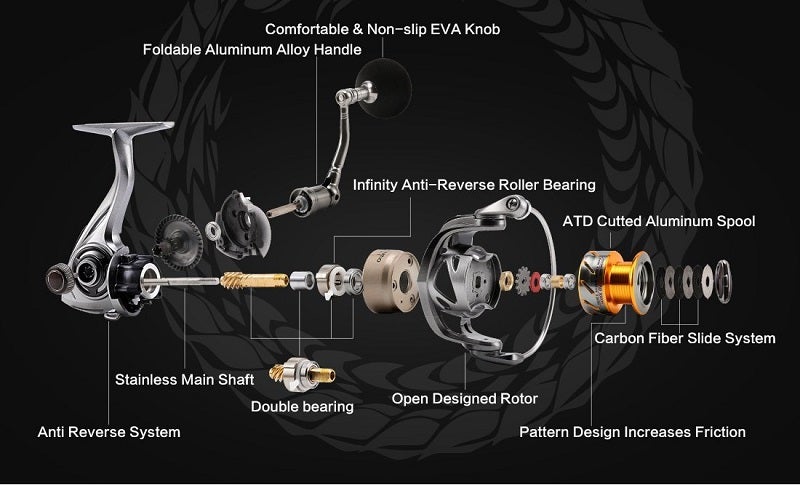
Body and Housing Construction
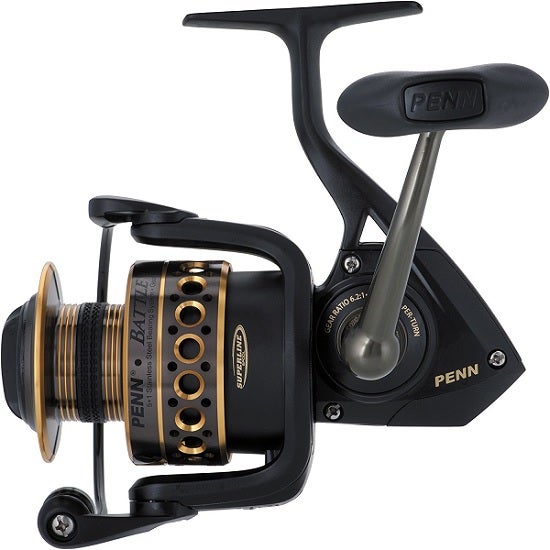
When you start looking at spinning reel construction, you’ll find several different materials being used to create the reel body.
This is the entire housing that the reel sits inside of and provides the structure of the reel components – including the reel stem which connects to the rod.
Metal body construction – is commonly done with aluminum. Many anglers feel that aluminum or metal body reels are stronger and the most capable of handling large fish. I would agree that if you are seeking huge gamefish, a metal body is a smart choice.
Graphite body construction – is extremely lightweight. They make good choices for lightweight rod and reel combos when fishing small to medium fish. Some users complain of brittleness with these reels.
Plastic body construction is sometimes found in reels, particularly in budget models. When done right, plastic can stand up to the needs of spinning reels. However, it’s often faulted for breaking, bending, and failing due to lack of strength especially compared to aluminum body construction
Reel Capacity and Size
Understanding what type of fishing you’ll be doing is important to making an intelligent buying decision. Each angler has a preferred bait, style, and fish of choice and that will vary on every fishing trip.
Consider what weight line you’ll want to use before simply choosing a reel off the shelf. This will determine the overall size of reel you’ll pick.
Reading the technical specs for the reel you’re looking to purchase will reveal the line test the reel is suited for as well as the yardage capacity of the reel.
Often you can safely move one step up or down from the recommended line test in the charts but remember to expect an adequate adjustment of line capacity overall.
Reel Drag Systems
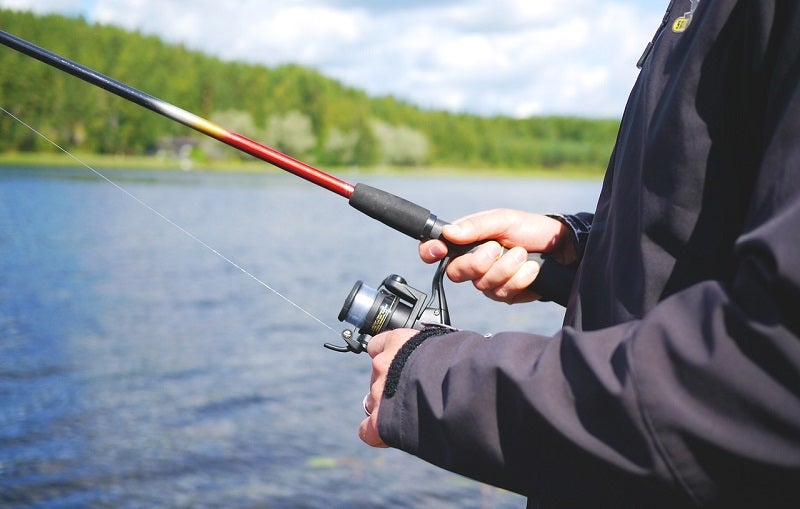
Too much drag and you’ll snap the line. Too little drag and you’ll be fighting your catch all day long! That’s why drag systems are always improving and today’s spinning reels have two main types:
Front drag systems are generally considered higher quality due to their improved construction. Why they are made better than rear drag systems eludes me, frankly. However, they do come with one major drawback; they are harder to access while fighting a fish.
Rear drag systems tend to be a little less robust. For saltwater fishing you will probably be targeting larger fish and, therefore, may wish to stay with a front drag system for ultimate durability.
The one major advantage of rear drag systems is that they are much easier to adjust during a fight.
It’s up to you which system you go with. For higher quality brands I really wouldn’t worry about durability issues and instead I would go with a rear drag knob.
However, if you’re specifically targeting particularly large species, err on the side of durability.
Spools
Today you’re most likely to encounter the ever-popular skirted spool reel. These are the image of spinning reels that you likely envision when someone mentions the name. Skirted spinning reels create less drag on fishing line than their older relatives which have gone by the wayside.
Within the last few years several innovations have piqued the curiosity of anglers. Mag spools and long-cast spools are slight variants on the spinning reel’s skirted spool design.
Both of them report longer cast distances and decreased friction. Unless you’re a real pro, however, it’s pretty unlikely you’ll really notice a difference
Anti-Reverse
This is just what it sounds like, when you engage it, the handle and bail are prevented from spinning in reverse so the line doesn’t come off the reel. This allows you the set the line when you get a strike and allows the drag to perform its function.
If you turn it off, the reel can be turned in both directions and allows you to reel in reverse if you get a hit instead of relying on your drag.
With modern reel technology having smooth drag systems there is no good reason to not use the anti-reverse setting anymore.
Choosing a Saltwater Specific Reel
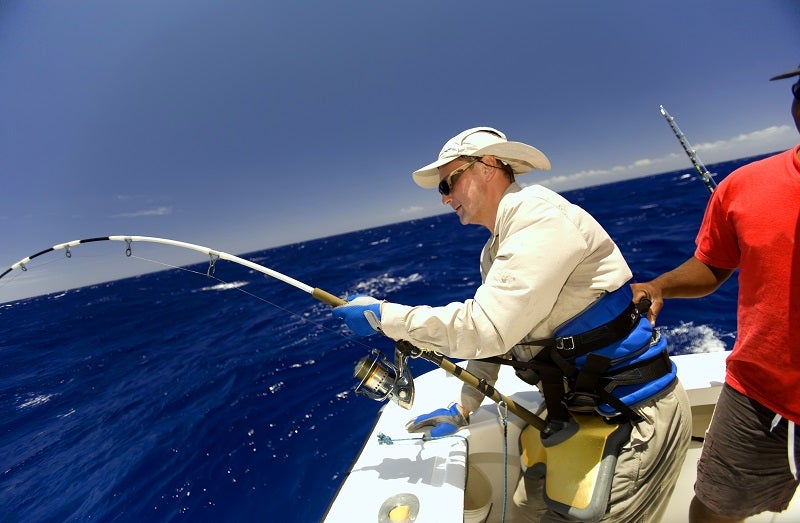
While I did mention several components of a good spinning reel which can be saltwater specific, there is another way to choose!
Most manufacturers of spinning reels will carry one or more dedicated saltwater fishing lines of equipment. These reels are made from the right stuff and will be engineered specifically for saltwater use.
If all else fails, just go with a trustworthy manufacturer and look for their saltwater line of products!
Triggerspin Reels
Triggerspin reels combine some of the best features of spinning reels with the simplicity and ease of use that users love from spincast reels.
Triggerspin reels were invented by Zebco (inventor of the spincast reel). They have the same balanced look and feel of a spinning reel, but feature the click button release of a spincast reel.
The reel sits upside down on the rod and hangs naturally in the hand, allowing for easy casting. This also puts the crank on the same side as your off-hand. It’s sort of a hybrid between the worlds of spinning reels and spincasting.
They’re worth considering here because many of you may prefer the ease of use if you’ve been reluctant to pick up a spinning reel due to complication of use.
FAQs About Saltwater Spinning Reels
Q: How do I care for and clean my saltwater reel?
A: Saltwater is hard on line, bearings, and reels in general. For a long time I always thought, “Hey, it’s a saltwater reel, there’s no need to take special care of it, right?” Well, it turns out that might not be the case.
No matter how good your saltwater spinning reel may be, cleaning and caring for it will definitely help it live longer. You’ll have smoother reeling, better drag control, and less corrosion over the long run if you start taking care of it now.
Some people advocate simply spraying the reel down with a freshwater hose when you get back. I think most of the time this is an acceptable method of cleaning, honestly.
If you’re not happy with this level of clean, though, you can try a 5-gallon bucket full of soapy water. One of the main issues here is that, over time, the soapy water may actually strip away some of the lubricants inside the reel.
In the end you’ll have to decide what’s best for you. I usually just spray down with fresh water.
Remember that disassembling and lubricating your reels once or twice a year is necessary maintenance for any reel.
Q: Can I disassemble my reel to work on the insides?
A: Yeah, you totally can.
You’ll need a few basic tools and some mechanical aptitude. If you’re the type of person that can’t figure out which end of a screwdriver to use, however, don’t attempt this.
You’ll need:
- Philips screwdrivers
- Bearing grease
- Fishing reel oil
Ideally you’ll want to follow instructions from the manufacturer. However, most fishing reels are designed quite similarly so you can probably get away with just watching this video.
A few tips for you:
- Always start screws by hand to avoid stripping them
- Use the clutch on an electric drill to avoid over-tightening
- Make sure you’re using the correct type of grease (there are a lot of kinds)
- Use a small bowl to hold tiny parts so you don’t lose a screw
It’s not hard to service your own fishing equipment so get out there and do it this winter while you’re sitting around watching Netflix.
Q: I’m going deep sea fishing, are these reels right for me?
A: Deep sea fishing is out of my league! However, I can tell you that for the most part you’ll want different types of reels than what we’re looking at here.
If you’re going out with a charter, they will have or tell you what to bring depending on where you’re going and what you’re fishing for. The best advice I can give you is to ask the charter captain what they recommend instead of hunting around online.
For surf fishing or pier fishing, you’ll be happy with many of the reels listed here. Most likely you’ll want to go with something in the 3,000 series to handle the line diameter and length you’ll need for these waters.
Q: Can I use my saltwater reel for inland fishing?
A: Yeah, you totally can.
One thing to note, however, is that most saltwater reels are meant to handle relatively large line diameters. This is simply because saltwater fish tend to be larger and fight harder.
When fishing inland or freshwater for many species you’ll want to be using much thinner, lighter line usually. While you may be tempted to throw light line on your saltwater rig, make sure the reel can handle line that small.
In much the same way that using too big of line on a small reel can cause problems, using small line on a big rig can make problems, too!
If you can afford it, I would honestly recommend a freshwater setup that is separate from your saltwater setup. This is just because the two are usually quite a bit different in approaches.
Using a freshwater or inland spinning reel in saltwater is usually fine, too. However if you do this, expect reel life to be shortened unless you’re 100% anal about immediately washing and cleaning your reel every time you come in.
Q: Are there special saltwater fishing rods I need to use?
A: For most anglers I would say, “No.”
However, in reality, there are actually saltwater rods. There are rods for everything, really! It’s kind of absurd.
For elite or highly experienced anglers the differences in these rods mean a lot. You and I, however, probably won’t notice many of the small differences.
What you should pay attention to is rod length, action, and power for different activities. Surf fishing, for instance, requires a particularly long rod whereas casting stump fields in the deltas may require an altogether different rod.
As for saltwater versus freshwater rods, the differences are few. Mostly you just want to avoid components that could corrode such as steel (even stainless steel can corrode). However, most rods don’t use these materials anyways.
Look for the rod that matches the type of fishing you’re doing and you should be okay!
Conclusion
I tried to make sure that our list of saltwater spinning reels features an array of options. Of course, there are always more reels to consider and tons of manufacturers out there.
If our list doesn’t have something that makes sense for you, then it’s time to revisit the “how to choose” section. Then head to your local trusted outfitter and search for that perfect reel.
For most anglers there’s no need to seek out the absolute most expensive reels on the market. The tangible gains are often negligible and the money spent can feel wasted.
That’s why it’s important to understand what to look for in the perfect saltwater spinning reel and then choose the one that works best for you!
Of course we all have different needs and preferences so consider where you’ll fish, what type of fish and bait you’ll use, and what you like in a reel.
There’s no perfect answer for everyone and most anglers go through many reels during their life, always in search of that perfect one!
Just remember to enjoy your afternoons on the water, no matter what comes your way.
How We Researched
To come up with the top saltwater spinning reels we researched a variety of sources for reviews such as REI, Dicks Sporting Goods and Bass Pro Shops along with our own personal experience.
We also consulted online magazines for product research and reviews to get as much unbiased information as we could. To help weed out fake reviews we used Fakespot.com to make sure we only looked at genuine reviews.
With so much quality gear available, we had to narrow it down based on what we felt were the best options for the price. The author, Casey Fiedler has been an avid fisherman for decades and leads fishing trips into the backcountry.
To help narrow down the selection our authors used their personal experience along with recommendations from charter captains and tour guides.
After extensive research, we came up with our list to help you choose the right one for you.
Sources
I hope this guide was helpful for finding the best saltwater spinning reel to fit your needs. If you want to comment or recommend a reel I didn’t include, please use my contact form to get in touch.
Have fun and good luck!

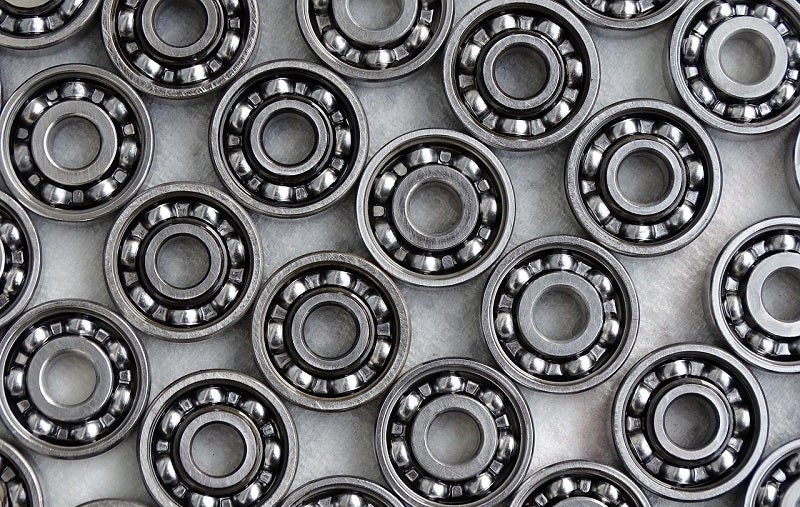
the kastking megatron has 21kg of drag, 46 pounds. not 30
puts it well ahead of the rest.
Robert, maybe you are looking at a different model? Stats say 30 pounds of drag…
In my opinion manufacturers have lost the plot. Bearings are a cheap alternative to bronze bushings, which require a tighter tolerance and frequent oiling but will outlive any bearings. When it comes to ease of maintenance when used in saltwater the fewer parts to a reel the better. The old Abu Cardinal budget range, 40, 40A, 70A, 140 and 160 come to mind. In my mind one either choses 1 of two ways. Go cheap and cheerful and maybe dispose of them after a season or go top end and keep them maintained.
Still it is one’s own choice what one does. I’m still looking for the ultimate saltwater spinning reel. Have and Old Penn (440SS) and a Clash. Both have parts that are fiddly / awkward to refit (my view) Mainly the bail arm springs. Lot to be said for not having a bail arm. As yet not had a problem with the Clash’s bearings though only had it a few years. The older Penn requires stripping and cleaning more regularly. A sealed or better still a ceramic bearing might improve that. Sealed Ceramic bearing, such a thing? Anyone else got a different view?